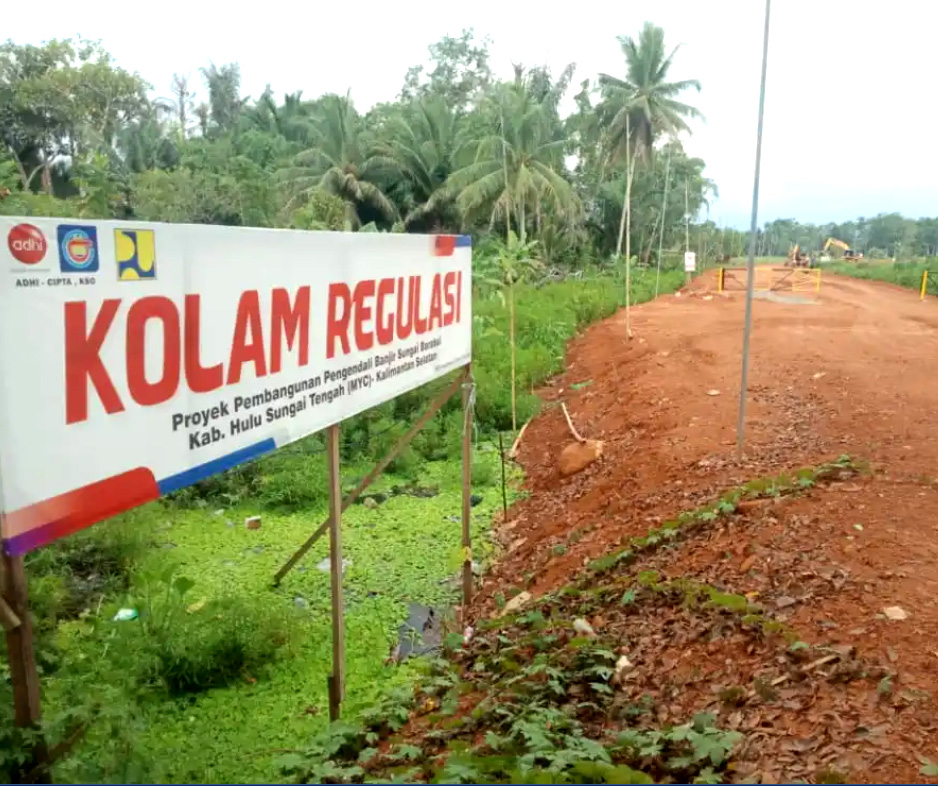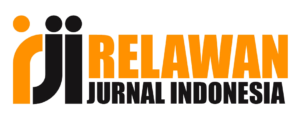Quality of Regulatory Pond Development Plan Documents for Barabai Flood Control Against Mandatory LoadsLand Acquisition Planning Document
DOI:
https://doi.org/10.31292/mj.v2i2.32Keywords:
Land acquisition, land acquisition planning documents, land development, regulatory poolAbstract
The implementation of land acquisition for the construction of the Barabai flood management pond has been completed successfully and is regarded as a success. One of the factors influencing the success of its execution is land acquisition planning, as stated in the Land Acquisition Planning Document (DPPT). The goal of this research was to assess the quality of the mandatory cargo in the Regulatory Pond Development Plan Document for Flood Control of the Barabai River for the Fiscal Year 2021. The quality of the mandatory cargo for the DPPT is determined using a qualitative technique with descriptive analysis in accordance with Ministerial Regulation Spatial Planning (ATR) /Head of the National Land Agency (BPN) No. 19 of 2021. The document was recognized and examined based on the regulation's mandatory content. Document studies were conducted to acquire data by studying the contents of the DPPT. The study revealed that there are 38 descriptions that must be met in order to create the DPPT. A total of 29 descriptions in the planning document have been thoroughly examined in their analysis, while nine descriptions require further discussion in the document. The presence of more favorable than bad descriptors in the DPPT implies that the stages of land acquisition planning and implementation are in sync. The presence of more favorable than bad descriptors in the DPPT implies that the stages of land acquisition planning and implementation are in sync. Mean¬whi¬le, the nine descriptors must be examined in greater depth in the document. The presence of more favorable than bad descriptors in the DPPT implies that the stages of land acquisition planning and implementation are in sync.
Downloads
References
Angriani, F., & Kumalawati, R. (2016). Pemetaan Bahaya Banjir Kabupaten Hulu Sungai Tengah Provinsi Kalimantan Selatan. Jurnal SPATIAL Wahana Komunikasi Dan Informasi Geografi, 16(2), 21–26. https://doi.org/10.21009/spatial.162.03
Auliagisni, W., Wilkinson, S., & Elkharboutly, M. (2022). Using Community-Based Flood Maps to Explain Flood Hazards in Northland, New Zealand. Progress in Disaster Science, 14, 100229. https://doi.org/10.1016/j.pdisas.2022.100229
Azmie, M., & Helda, N. (2021). Analisis Pengaruh Pembangunan Bendungan Tapin Terhadap Debit Banjir di Hilir Sungai Tapin Kabupaten Tapin. Jurnal RIVET (Riset Dan Invensi Teknologi), 1(1), 40–47. https://doi.org/https://doi.org/10.47233/rivet.v1i01.227
Camp, T., Laufersweiler, B., & Robbins, S. (2018). Using Pre-project Planning to Manage Workload (pp. 1–18). https://doi.org/10.1108/S0732-067120180000038010
Dewi, A. R., Sutaryono, & Nurhikmahwati, A. (2020). Pemetaan Masalah Pengadaan Tanah dengan Objek Tanah Ulayat (Kasus Jalan Tol Padang-Sicincin). BHUMI: Jurnal Agraria Dan Pertanahan, 6(2).
Dewi, N. L. G. M. P., & Salim, M. N. (2020). Berakhir di Temon: Perdebatan Panjang Pengadaan Tanah untuk [New] Yogyakarta International Airport (YIA). STPN Press.
Ferdian, D., Saggaff, A., & Sarino, S. (2020). Efektifitas Pengendalian Banjir dengan Embung: Studi Kasus Taman Firdaus Universitas Sriwijaya. Cantilever: Jurnal Penelitian Dan Kajian Bidang Teknik Sipil, 9(1), 57–62. https://doi.org/https://doi.org/10.35139/cantilever.v9i1.39
Indrasari, M., & Rudiarto, I. (2020). Kemampuan Kebertahanan Masyarakat pada Permukiman Rawan Banjir di Kecamatan Barabai, Kabupaten Hulu Sungai Tengah. Jurnal Wilayah Dan Lingkungan, 8(2), 116–129. https://doi.org/10.14710/jwl.8.2.116-129
Madani, I., Bachri, S., & Aldiansyah, S. (2022). Pemetaan Kerawanan Banjir di Daerah Aliran Sungai (DAS) Bendo Kabupaten Banyuwangi Berbasis Sistem Informasi Geografis. Jurnal Geosaintek, 8(2), 192–199. https://doi.org/10.12962/j25023659.v8i2.11907
Marwiyah, S., Husni, M., & Rozak, A. (2022). Dampak Keputusan Gubernur Jawa Timur tentang Penetapan Lokasi Pembangunan Jalan Tol Pasuruan–Probolinggo. SOSPOLI: Jurnal Sosial Politik Integratif, 2(6), 333–344.
Puteri, L. A. L., Susetyo, B., & Suroso, A. (2022). Peran Pemangku Kepentingan Terhadap Faktor-Faktor Risiko pada Proyek KPBU Jalan Tol Unsolicited. Konstruksia, 14(1), 61–70. https://doi.org/10.24853/jk.14.1.61-70
Rachmawan, D. (2015). Pola Eskalasi Konflik Pembangunan Infrastruktur: Studi Kasus Pembangunan Waduk Jatigede Kabupaten Sumedang. Masyarakat, Jurnal Sosiologi, 20(2), 193–212.
Rahayu, A. D., & Amrin, R. N. (2022). Peran Stakeholder dalam Pengadaan Tanah untuk Pembangunan Bendungan Bener di Kabupaten Wonosobo. Tunas Agraria, 5(3), 165–181. https://doi.org/10.31292/jta.v5i3.182
Ramadhani, D., Hariyanto, T., & Nurwatik, N. (2022). Penerapan Metode Analytical Hierarchy Process (AHP) dalam Pemetaan Potensi Banjir Berbasis Sistem Informasi Geografis (Studi Kasus: Kota Malang, Jawa Timur). Geoid, 17(1), 72–80. https://doi.org/10.12962/j24423998.v17i1.10250
Razidinnor, M. (2021). Menolak Lupa! Barabai Kalsel, Tragedi 14 Januari 2021! Kompasiana. https://www.kompasiana.com/zidinzidin6067/600d7a49d541df1589698c92/menolak-lupa-barabai-kalsel-tragedi-14-januari-2021
Rizani, M. A., Setiawan, K. P., Sa’dianoor, S., Syarif, A., Alim, F. S. N., Wahyuni, E., & Chomah, N. S. E. (2023). Fleksibilitas Lantai Hunian: Alternatif Konsep Mitigasi Banjir di Kota Barabai. Buletin Profesi Insinyur, 6(1), 1–6. https://doi.org/https://doi.org/10.20527/bpi.v6i1.150
Scherzer, S., Lujala, P., & Rød, J. K. (2019). A Community Resilience Index for Norway: An Adaptation of the Baseline Resilience Indicators for Communities (BRIC). International Journal of Disaster Risk Reduction, 36, 101107. https://doi.org/10.1016/j.ijdrr.2019.101107
Setiowati, S., Kistiyah, S., Martanto, R., & Syaifullah, A. (2018). Kajian Peranan Dokumen Perencanaan dalam Menentukan Keberhasilan Pelaksananaan Pengadaan Tanah di Provinsi Jawa Timur.
Setiyowati, Y. A., Sholichin, Moh., & Prayogo, T. B. (2022). Studi Kelayakan Pengadaan Tanah guna Penanggulangan Banjir pada Sungai Kali Lamong Kabupaten Gresik. Jurnal Teknologi Dan Rekayasa Sumber Daya Air, 2(1), 182–192.
Suhadi, S. (2018). Harmonization of Regulation on Land Acquisition for Infrastructure Development with Public-Private Partnership Scheme in Indonesia. Proceedings of the 1st International Conference on Indonesian Legal Studies (ICILS 2018). https://doi.org/10.2991/icils-18.2018.40
Suhendra, M., & Safitri, O. (2020). Analysis of Determinants of Success in Land Acquisition for Central Java Power Plant Public-Private Partnership Project (2 x 1000 MW). In A. Solikin, Y. Hadiwibowo, B. Setiawan, A. Firmansyah, & H. Dwi Mulyaningsih (Eds.), Public Sector Accountants and Quantum Leap: How Far We Can Survive in Industrial Revolution 4.0? (1st ed.). Routledge. https://doi.org/10.1201/9780367822965
Sumardjono, M. S. W. (2015). Dinamika Pengaturan Pengadaan Tanah di Indonesia: dari Keputusan Presiden sampai Undang-Undang. Gadjah Mada University Press.
Suraji, S., Tendean, N., Basir, H., A., A., W, A. Z., & D, K. R. (2022). Analisa Permasalahan Pengadaan Tanah dan Dampak Sosial Pembangunan Jalan Tol Manado-Bitung. Jurnal Media Birokrasi, 4(2), 85–98. https://doi.org/10.33701/jmb.v4i2.2773
Sutaryono, S., Dewi, A. R., & Nurhikmahwati, A. (2020). Faktor-Faktor yang Menentukan Keberhasilan/Kegagalan Pengadaan Tanah untuk Kepentingan Umum pada Tanah Nagari (Studi di Kabupaten Padang Pariaman, Provinsi Sumatera Barat).
Swela, A. G., Santosa, E., & Manar, D. (2017). Analisis Dampak Pembebasan Tanah dan Nilai Ganti Rugi Terhadap Kondisi Sosial Ekonomi Masyarakat dalam Pembangunan Waduk Logung di Desa Kandangmas dan Desa Tanjungrejo Kabupaten Kudus. Journal of Politic and Government Studies, 6(2), 41–50.
Tarkono, Humam, A., Humam, A., Vidia Mahyunis, R., Fauziah Sayuti, S., Annisa Hermastuti, G., Sitanala Putra Baladiah, D., & Rahmayani, I. (2021). Pemetaan Daerah Potensi Rawan Banjir dengan Sistem Informasi Geografi Metode Weighted Overlay di Kelurahan Keteguhan. BUGUH: Jurnal Pengabdian Kepada Masyarakat, 1(3), 9–20. https://doi.org/10.23960/buguh.v1n3.138
Taryana, A., El Mahmudi, M. R., & Bekti, H. (2022). Analisis Kesiapsiagaan Bencana Banjir di Jakarta. JANE - Jurnal Administrasi Negara, 13(2), 302–311. https://doi.org/10.24198/jane.v13i2.37997
Tenong, S., Maroa, M. D., & Setiawan, R. (2021). Tinjauan Yuridis Penyelenggaraan Pengadaan Tanah bagi Pembangunan untuk Kepentingan Umum Berdasarkan Peraturan Pemerintah Nomor 19 Tahun 2021. Jurnal Yustisiabel, 5(2), 194. https://doi.org/10.32529/yustisiabel.v5i2.1279
Trunajaya, H. (2022). Pemkab HST Bebaskan 191 Persil Lahan Pertanian Dua Desa Rp34,1 M, Dukung Bangun Kolam Regulasi Pengendalian Banjir Kota Barabai. Kaltimku.Id. https://kaltimku.id/pemkab-hst-bebaskan-191-persil-lahan-pertanian-dua-desa-rp341-m-dukung-bangun-kolam-regulasi-pengendalian-banjir-kota-barabai/
Turnip, A. L. (2020). Evaluasi Kesesuaian Antara Dokumen Perencanaan dengan Peraturan Perundang-Undangan Pengadaan Tanah dalam Proyek Pembangunan Jalan Tol Tebing Tinggi–Pematangsiantar. Sekolah Tinggi Pertanahan Nasional.
Utami, W., & Sarjita, S. (2021). Pengadaan Tanah di Indonesia dan Beberapa Negara dari Masa ke Masa (Tim STPN Press, Ed.). STPN Press.
Wibowo, B. (2022). Penerapan Whole of Government (WoG) dalam Penyiapan Penlok Pengadaan Tanah Kepentingan Umum di Provinsi Jawa Tengah. Jurnal Good Governance, 18(1), 21–36. https://doi.org/10.32834/gg.v18i1.456
Yudhanto, F., Prasetyo, P. K., & Sudibyanung, S. (2021). Kesesuaian Dokumen Perencanaan Pengadaan Tanah Bendungan Karian dengan UU Pengadaan Tanah di Kabupaten Lebak. Widya Bhumi, 1(1), 39–57. https://doi.org/10.31292/wb.v1i1.8
Yunida, R., Kumalawati, R., & Arisanty, D. (2017). Dampak Bencana Banjir Terhadap Kondisi Sosial Ekonomi Masyarakat di Kecamatan Batu Benawa Kabupaten Hulu Sungai Tengah, Kalimantan Selatan. JPG (Jurnal Pendidikan Geografi), 4(4), 42–52. https://doi.org/https://dx.doi.org/10.20527/jpg.v4i4.3812

Downloads
Published
How to Cite
Issue
Section
License
Copyright (c) 2023 Reza Nur Amrin

This work is licensed under a Creative Commons Attribution-ShareAlike 4.0 International License.

















